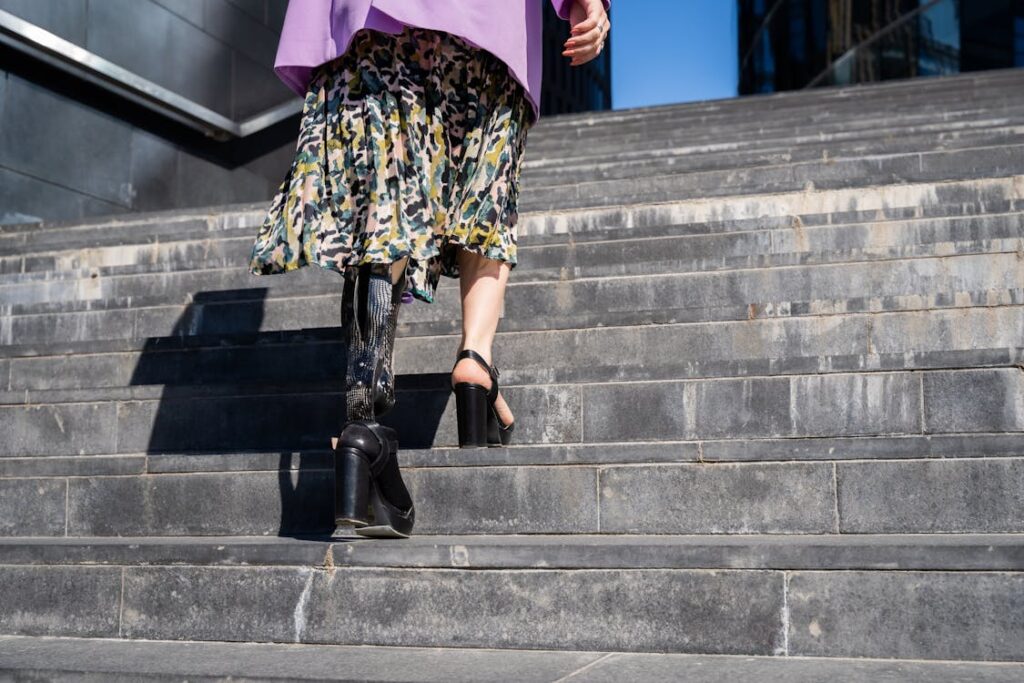Losing a limb is a life-altering experience, but advancements in prosthetic technology are giving amputees more control, comfort, and independence than ever before. Myoelectric prosthetics, in particular, are revolutionizing the way people with limb loss interact with the world. Unlike traditional prosthetics, which rely on body-powered mechanisms, myoelectric limbs use electrical signals from the muscles to create smooth, natural movement.
These high-tech prosthetics allow users to perform everyday tasks with ease, from gripping objects to making precise hand movements. By connecting directly to the user’s muscles, myoelectric limbs offer an experience that feels more intuitive and lifelike. But how do they work, and why are they such a breakthrough for amputees?
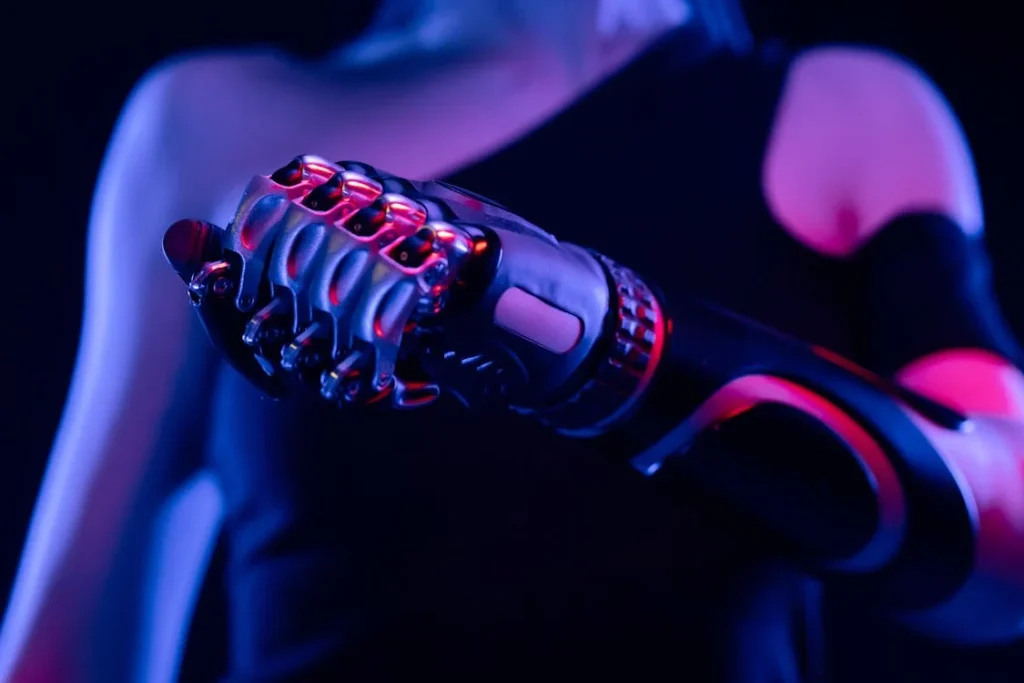
Understanding How Myoelectric Prosthetics Work
Myoelectric prosthetics function by using electrical signals generated by the user’s muscles. Every time a person moves, their brain sends signals through nerves to the muscles, triggering contractions.
Even if a limb is missing, these electrical signals are still present in the residual muscles of the amputated limb. Myoelectric prosthetics are designed to detect and interpret these signals, converting them into movement.
The process begins with sensors, known as electrodes, that are placed inside the prosthetic socket. These electrodes rest against the skin of the residual limb, where they pick up tiny electrical impulses generated by muscle activity.
When the user attempts to move their missing hand, for example, the electrodes detect the signals and send them to a microprocessor inside the prosthetic.
The microprocessor then processes this information and directs small motors to create the corresponding movement in the prosthetic limb.
Unlike traditional body-powered prosthetics, which require harnesses and manual effort, myoelectric prosthetics respond instantly to the user’s intent.
This makes movement feel more natural and effortless. For example, a person using a myoelectric hand can open and close their fingers simply by contracting specific muscles in their forearm.
More advanced models allow users to perform multiple grip patterns, enabling them to hold a pen, lift a glass, or even shake hands with a more natural range of motion.
The Role of Artificial Intelligence in Myoelectric Prosthetics
Modern myoelectric prosthetics go beyond basic muscle signal detection. Many advanced models now incorporate artificial intelligence (AI) to make movement more intuitive and efficient.
AI-powered prosthetics can learn from the user’s muscle patterns over time, improving responsiveness and allowing for smoother transitions between movements.
For example, if a user frequently switches between a pinch grip for holding small objects and a firm grip for lifting heavier items, the AI in their prosthetic can recognize these patterns and adjust accordingly.
This reduces the learning curve for new users and enhances overall ease of use.
Some myoelectric prosthetics also include adaptive grip control, which means the prosthetic can adjust the force of its grip based on the object being held.
This allows users to grasp delicate objects without breaking them or hold onto heavier objects securely without slipping. The integration of AI ensures that movements feel more natural, allowing users to interact with their environment more confidently.
The Power Behind Myoelectric Prosthetics
Since myoelectric prosthetics rely on electronic components, they require a power source to function. Most models use rechargeable batteries that last several hours, depending on usage.
The battery powers the sensors, microprocessor, and motors that drive movement. Some prosthetics even have smart power management systems that optimize battery life by adjusting energy consumption based on activity level.
Battery technology continues to improve, making myoelectric prosthetics more efficient and reliable. Many modern prosthetic hands and arms include indicators that alert users when the battery is low, ensuring that they are never caught off guard.
As wireless charging and energy-efficient components become more common, the future of myoelectric prosthetics will likely include longer-lasting batteries and faster charging solutions.
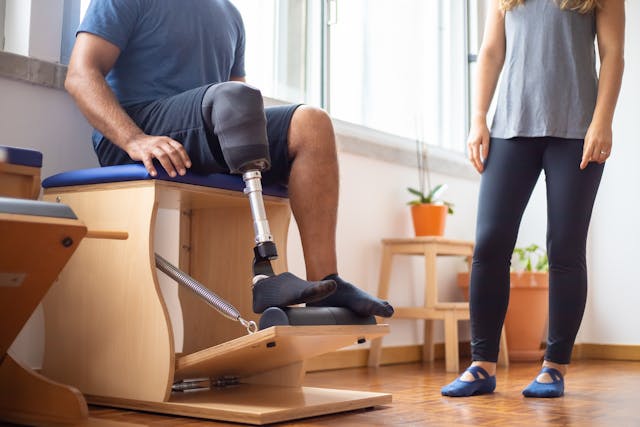
The Advantages of Myoelectric Prosthetics Over Traditional Prosthetics
Myoelectric prosthetics are transforming the way amputees experience movement, offering significant improvements over traditional prosthetic options.
While conventional prosthetics have helped millions regain function, they come with limitations that myoelectric technology overcomes. By providing greater control, enhanced comfort, and a more natural feel, myoelectric limbs are redefining what is possible for amputees.
More Natural and Intuitive Movement
One of the biggest advantages of myoelectric prosthetics is their ability to create movement that closely mimics natural motion.
Traditional body-powered prosthetics rely on cables and harnesses, requiring the user to physically manipulate the limb with their shoulder or upper body. This can feel unnatural and requires significant effort over time.
Myoelectric prosthetics, in contrast, respond directly to muscle signals, allowing for smoother, more controlled movements. A user can flex their forearm muscles to open or close their hand, just as they would with a natural limb.
More advanced models allow for wrist rotation and individual finger control, enabling a range of grip patterns for different tasks. This makes everyday actions like typing, cooking, or holding a phone feel far more natural.
Less Physical Strain and Fatigue
Traditional prosthetics require users to exert physical effort to operate them. Body-powered prosthetics, for example, depend on shoulder or back muscles to generate movement, which can lead to strain and discomfort, particularly for long-term users.
Over time, this repeated strain can contribute to muscle fatigue and even joint problems in the unaffected limbs.
With myoelectric prosthetics, users experience less physical strain because the limb moves in response to muscle signals rather than manual force.
This means that actions require less effort, reducing stress on the body. As a result, users can wear their prosthetic for longer periods without discomfort or fatigue.
Greater Precision and Functionality
Myoelectric prosthetics provide significantly more control than traditional prosthetics. A mechanical prosthetic hand, for example, often has a single open-and-close function, limiting its ability to perform complex tasks.
Myoelectric hands, on the other hand, feature multiple grip patterns and even independent finger movement, allowing users to grasp small objects, hold delicate items, or perform intricate tasks with precision.
For lower limb amputees, myoelectric prosthetic legs use microprocessors to adjust movement dynamically. Unlike mechanical prosthetic legs, which follow a fixed motion pattern, myoelectric legs adapt in real time to the user’s walking speed, terrain, and body movements.
This results in a smoother gait and a more natural walking experience, reducing the risk of falls and improving overall mobility.
Improved Aesthetic and Psychological Benefits
Beyond functionality, myoelectric prosthetics offer emotional and psychological benefits. Because they allow for more natural movement, they help users feel more confident in social situations.
Traditional prosthetics can sometimes make interactions feel awkward due to their limited mobility, but myoelectric limbs allow for natural gestures like waving, shaking hands, or even typing on a phone screen.
Additionally, many myoelectric prosthetics are designed with sleek, modern aesthetics that users embrace. Rather than trying to hide their prosthetic, many individuals take pride in the high-tech look and advanced capabilities of their bionic limb.
This shift in perception helps users feel empowered rather than limited by their prosthetic.
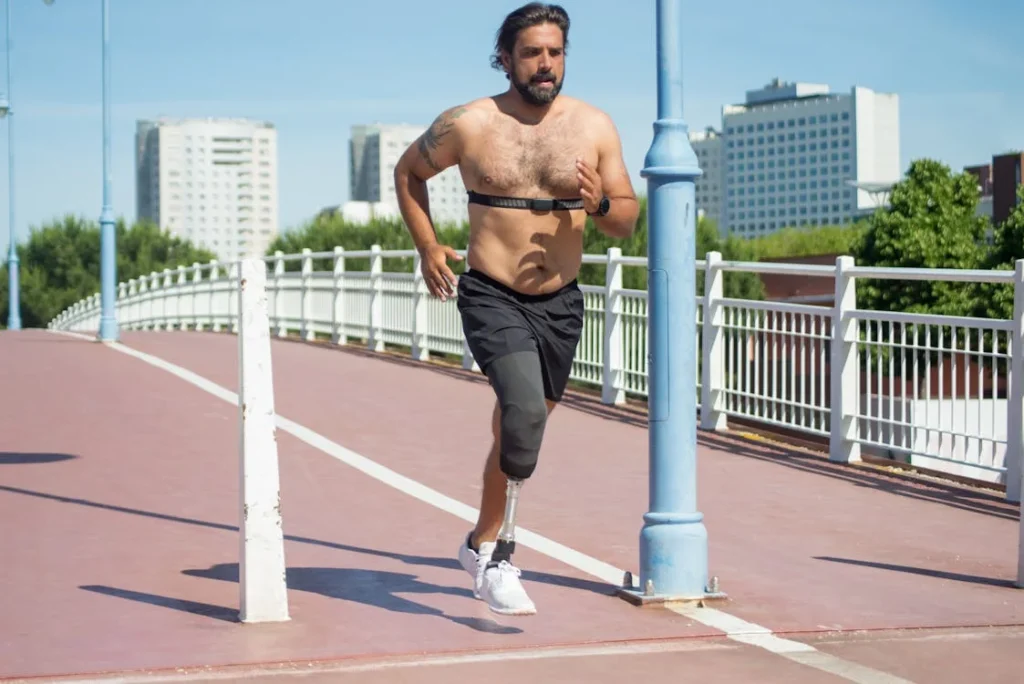
Challenges and Considerations of Myoelectric Prosthetics
While myoelectric prosthetics offer remarkable advantages, they are not without challenges. From cost and maintenance to the learning curve and durability, users must consider several factors before deciding if a myoelectric limb is the right choice for them.
Understanding these potential drawbacks helps individuals make informed decisions and prepare for the transition to a more advanced prosthetic.
Cost and Affordability
One of the biggest concerns surrounding myoelectric prosthetics is their cost. Because they use advanced technology, including sensors, microprocessors, and motorized components, they tend to be more expensive than traditional prosthetics.
The price varies depending on the level of functionality, with high-end models featuring multi-grip patterns, AI learning, and sensory feedback costing significantly more.
However, while the upfront cost is higher, many users find that the long-term benefits—such as reduced strain, increased efficiency, and improved quality of life—justify the investment.
Additionally, some insurance plans, government assistance programs, and prosthetic funding organizations help make myoelectric prosthetics more accessible to those in need.
At Robobionics, we focus on developing cost-effective bionic solutions, ensuring that more people can benefit from cutting-edge prosthetic technology.
Learning Curve and Adaptation
Unlike traditional prosthetics, which operate mechanically, myoelectric prosthetics require users to learn how to control them using muscle signals.
This means that new users must undergo training and rehabilitation to develop the necessary muscle strength and coordination to operate the prosthetic effectively.
Initially, some users may find it challenging to activate the right muscles at the right time to perform smooth movements. This is especially true for individuals who have experienced long-term limb loss, as their residual muscles may have weakened due to lack of use.
Rehabilitation programs, including gamified training and guided therapy sessions, help users build muscle control and gain confidence in using their myoelectric limb.
Battery Life and Charging Requirements
Since myoelectric prosthetics rely on electronic components, they require a power source to function. Most models run on rechargeable batteries, which typically last for a full day of use before needing to be recharged.
While this is not a major inconvenience for most users, forgetting to charge the prosthetic overnight can lead to unexpected interruptions the next day.
Battery lifespan is another consideration. Over time, rechargeable batteries degrade and may need replacement, adding to long-term maintenance costs.
Some newer prosthetics are exploring wireless charging solutions, which could make recharging more convenient in the future.
Durability and Environmental Sensitivity
Traditional prosthetics, particularly body-powered ones, are often more rugged and resistant to environmental factors like water, dust, and extreme temperatures.
Myoelectric prosthetics, however, contain delicate electronic components that must be protected from moisture and impact.
Some myoelectric models offer water-resistant designs, but most require careful handling to prevent damage.
Users who work in demanding environments, such as construction sites or outdoor fields, may need to take extra precautions or opt for a hybrid approach—using a traditional prosthetic for rough conditions and a myoelectric one for daily activities.
Maintenance and Repairs
Because myoelectric prosthetics rely on sensors, motors, and microprocessors, they require periodic maintenance to ensure optimal performance.
Over time, components may need calibration, software updates, or repairs. Unlike traditional prosthetics, which can often be serviced by general prosthetists, myoelectric limbs require specialized technicians with experience in electronic prosthetics.
At Robobionics, we understand the importance of reliable servicing and offer dedicated support to ensure our users have access to quick and efficient maintenance. Our goal is to make sure that every user experiences uninterrupted functionality and confidence in their prosthetic.

The Future of Myoelectric Prosthetics: What’s Next?
Myoelectric prosthetics have already revolutionized the way amputees regain mobility, but the technology is constantly evolving.
As advancements in artificial intelligence, materials science, and neural integration continue to push the boundaries, the future of myoelectric prosthetics promises even greater functionality, accessibility, and comfort.
Mind-Controlled Prosthetics and Neural Integration
One of the most exciting developments in prosthetic technology is the shift from myoelectric control to direct brain-machine interfaces.
While current myoelectric prosthetics rely on muscle signals, future prosthetics may connect directly to the nervous system, allowing users to control their artificial limb with thought alone.
Researchers are already experimenting with neural implants that link prosthetics to the brain, enabling faster and more intuitive movement.
This could eliminate the need for extensive muscle training, making the learning curve much shorter. A direct brain interface would also allow for finer control, potentially enabling users to move individual fingers with precision, just as they would with a natural hand.
Sensory Feedback for a True Sense of Touch
One of the biggest limitations of current prosthetic technology is the lack of sensation.
While myoelectric prosthetics provide movement, they do not allow users to feel temperature, texture, or pressure. However, scientists are developing sensory feedback systems that can restore a sense of touch to prosthetic users.
By using advanced pressure sensors and electrical stimulation, new prosthetics can send signals to the brain, allowing users to “feel” the objects they touch.
Some experimental prosthetics have already demonstrated the ability to restore basic sensation, marking a major step forward in creating a more natural prosthetic experience.
In the future, amputees may be able to experience warmth, rough surfaces, or the gentle grip of holding a loved one’s hand.
Lightweight, Flexible, and More Durable Materials
Traditional prosthetics have often been bulky and rigid, making long-term use uncomfortable. However, innovations in materials science are leading to lighter, stronger, and more flexible prosthetics.
Future myoelectric limbs will be made from advanced carbon fiber composites, flexible polymers, and even bioengineered materials that mimic the properties of human skin and muscles.
These new materials will not only improve durability but also enhance comfort, making prosthetics feel more like a natural extension of the body.
Additionally, 3D printing technology is making custom prosthetic designs more affordable and accessible, allowing for a perfect fit for each individual user.
Artificial Intelligence and Machine Learning
Many modern myoelectric prosthetics already incorporate artificial intelligence to improve movement and adaptability. However, future prosthetics will take this even further by using machine learning to analyze and predict user behavior.
Imagine a prosthetic hand that learns a user’s habits over time, automatically adjusting grip strength for different tasks. Or a bionic leg that can predict movement patterns and adjust its microprocessor-controlled knee before the user even steps forward.
These advancements will make prosthetic limbs even more intuitive, reducing the need for manual adjustments and making movements feel seamless.
Affordable and More Accessible Prosthetics
While myoelectric prosthetics have traditionally been expensive, advancements in manufacturing and technology are making them more affordable.
As more companies invest in research and development, the cost of production is decreasing, allowing more amputees to access high-quality prosthetics without financial burden.
At Robobionics, we are committed to making advanced prosthetic technology available to as many people as possible.
With solutions like Grippy™, we aim to combine affordability with innovation, ensuring that users get the best of both worlds—cutting-edge functionality without excessive costs.
The Road Ahead
The future of myoelectric prosthetics is incredibly promising. With developments in brain-controlled movement, sensory feedback, AI-powered adaptability, and lighter materials, prosthetic technology will continue to evolve.
These innovations will not only improve mobility but also restore a greater sense of normalcy and confidence for amputees.
As research progresses, we move closer to a world where prosthetic limbs function as seamlessly as natural ones, allowing users to live without limits. The journey is just beginning, and Robobionics is proud to be at the forefront of this transformation.
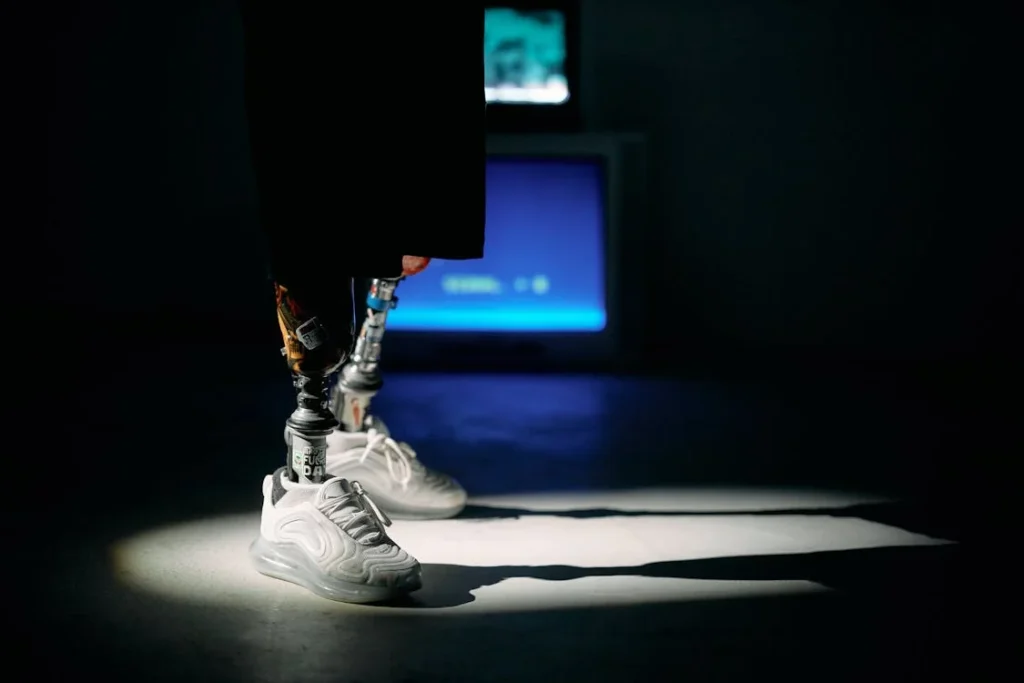
Real-Life Impact: How Myoelectric Prosthetics Are Changing Lives
Beyond the technical advancements and future possibilities, the true measure of myoelectric prosthetics lies in how they impact real people.
For many amputees, transitioning to a myoelectric limb is not just about restoring movement—it’s about regaining independence, confidence, and the ability to engage fully in everyday life.
Restoring Independence in Daily Activities
For individuals with upper limb loss, simple tasks like tying shoelaces, holding a coffee mug, or using a smartphone can be difficult with a traditional prosthetic.
Myoelectric prosthetics, however, bring back fine motor control, allowing users to perform these activities more naturally. The ability to change grip patterns, adjust pressure, and execute precise movements means that users no longer have to rely on others for basic tasks.
For example, a person who previously struggled to button a shirt with a basic mechanical prosthetic may find that a myoelectric hand gives them the control needed to complete the task with ease.
Similarly, a chef with a bionic hand can chop vegetables, stir ingredients, and handle kitchen tools with greater dexterity, enabling them to continue working in their profession.
Confidence in Social Interactions
The ability to move naturally and interact with others without hesitation has a huge psychological impact on prosthetic users.
Many individuals with limb loss report feeling self-conscious about their prosthetic in public, especially when it has limited functionality or appears mechanical. Myoelectric limbs, with their smooth and lifelike movement, help users feel more at ease in social situations.
For example, a bionic hand that allows for natural handshakes, gestures, and grip adjustments makes interactions feel effortless.
Whether it’s holding a friend’s hand, using a touchscreen device, or simply waving to someone, the fluid movement of a myoelectric prosthetic reduces self-consciousness and allows users to feel more like themselves.
Breaking Barriers in Work and Sports
Myoelectric prosthetics have opened new doors for amputees in the workplace and sports. Many jobs require precision, strength, and endurance—things that traditional prosthetics often struggle to provide.
With myoelectric technology, users can engage in tasks that were once considered too challenging for prosthetic wearers.
For instance, office workers can type more efficiently, artists can paint with greater accuracy, and musicians can play instruments with better control.
Some prosthetic users even take up competitive sports, using advanced bionic limbs designed for high-performance movement. Runners, rock climbers, and even swimmers are finding ways to push the limits of what prosthetics can achieve.
Reducing Physical and Mental Fatigue
One of the biggest challenges for amputees is dealing with physical fatigue from using a prosthetic limb.
Traditional prosthetics often require compensatory movements, which put strain on other parts of the body. Over time, this can lead to joint pain, muscle exhaustion, and postural problems.
Myoelectric prosthetics reduce this burden by providing powered assistance, making movements more effortless.
A person using a bionic leg, for example, benefits from microprocessor-controlled adjustments that allow for smoother walking, reducing strain on the hips and spine. This translates to less fatigue and greater endurance, enabling users to stay active longer.
The Emotional Journey: A New Sense of Self
Beyond the practical benefits, the transition to a myoelectric prosthetic is often an emotional journey. For many, it represents more than just regaining function—it symbolizes a fresh start, a step toward reclaiming their independence and identity.
Users often describe the moment they first move their myoelectric limb as life-changing. The realization that they can control their prosthetic with their own muscles, just as they would a natural limb, is a powerful experience.
It shifts the mindset from focusing on what was lost to embracing what is possible.
At Robobionics, we have witnessed firsthand how myoelectric prosthetics transform lives. Our goal is not just to provide advanced technology but to offer solutions that empower users to live life on their own terms.
With innovations like Grippy™, we are helping individuals regain confidence, mobility, and the freedom to pursue their passions without limitations.
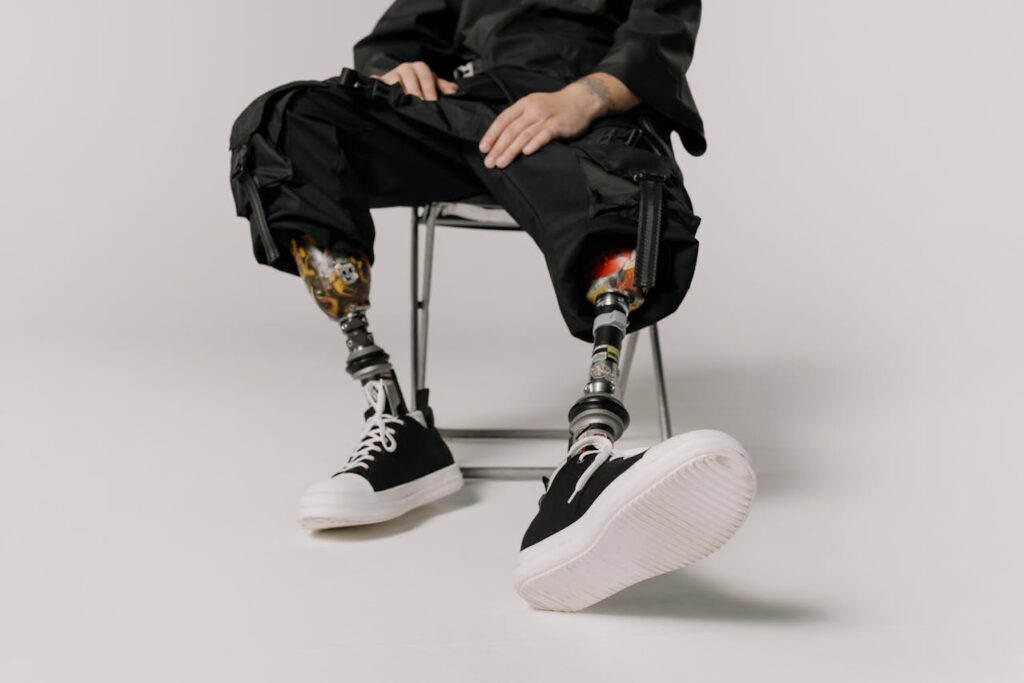
Overcoming Challenges: Making Myoelectric Prosthetics More Accessible
While myoelectric prosthetics offer incredible benefits, accessibility remains a key challenge. High costs, limited availability, and the need for specialized training can make it difficult for many amputees to access this technology.
However, ongoing advancements in manufacturing, funding programs, and training initiatives are helping bridge the gap, ensuring that more people can benefit from these life-changing prosthetics.
Reducing Costs Through Innovation
One of the main reasons myoelectric prosthetics are expensive is the complexity of the technology. Microprocessors, motors, advanced sensors, and durable materials contribute to higher manufacturing costs.
However, as technology evolves, new solutions are emerging that help lower these costs while maintaining high performance.
Companies like Robobionics are working to develop more cost-effective myoelectric prosthetics, making them more accessible without compromising on quality.
By leveraging 3D printing, modular designs, and AI-driven components, the production process is becoming more efficient, leading to more affordable prosthetic options for users.
Expanding Insurance and Financial Assistance
For many amputees, financial constraints are a significant barrier to accessing myoelectric prosthetics. While some insurance plans cover a portion of the cost, coverage varies widely depending on location, policy, and the specific prosthetic required.
To address this, government programs, charitable organizations, and assistive technology grants are helping individuals afford high-tech prosthetics.
Many nonprofits and advocacy groups work to connect amputees with financial aid, ensuring they can access the technology they need to live independent lives.
At Robobionics, we actively collaborate with organizations that provide funding assistance, helping users navigate their financial options and find solutions that work for them.
Increasing Availability in Developing Regions
In many parts of the world, access to myoelectric prosthetics is limited due to a lack of specialized clinics and trained professionals.
Traditional prosthetics, which require fewer technical resources, are often the only option available. However, efforts are being made to expand access to bionic limbs in developing regions.
Advancements in telehealth and remote training are making it easier for users to receive prosthetic care, even in areas where specialists are scarce.
By using digital platforms, prosthetists can guide users through fitting, training, and maintenance, ensuring they receive the support they need without requiring frequent in-person visits.
Robobionics is committed to increasing accessibility in India and beyond by working with local clinics, training specialists, and providing remote support to users.
Our goal is to ensure that more people can benefit from the power of myoelectric technology, regardless of their location.
Simplifying Training and Rehabilitation
One of the barriers to using myoelectric prosthetics is the learning curve. Unlike traditional prosthetics, which operate with mechanical movements, myoelectric limbs require muscle control and coordination.
New users must undergo rehabilitation and training to master their prosthetic, which can feel overwhelming at first.
To make this process easier, many prosthetic manufacturers, including Robobionics, offer gamified rehabilitation programs that turn training into an engaging and interactive experience.
These programs use exercises that mimic real-world activities, allowing users to build muscle strength and control in a fun and motivating way.
Additionally, AI-driven prosthetics are improving ease of use by learning from the user’s movement patterns. Future prosthetics will continue to refine this technology, making the transition to a bionic limb even smoother.
The Road to Greater Accessibility
While challenges remain, the future of myoelectric prosthetics is becoming more inclusive. As costs decrease, funding options expand, and training becomes more accessible, more people will be able to experience the benefits of this transformative technology.
At Robobionics, we believe that every amputee deserves access to cutting-edge prosthetic solutions.
Through continuous innovation, partnerships, and user support, we are working to break down barriers and make myoelectric prosthetics a reality for more people around the world.
Conclusion
Myoelectric prosthetics have transformed the way amputees regain mobility, offering a level of control, comfort, and independence that traditional prosthetics cannot match. By using muscle signals to create intuitive movement, these advanced prosthetics allow users to perform everyday tasks with greater ease and confidence.
While challenges such as cost, accessibility, and training still exist, ongoing advancements in technology, financial assistance programs, and rehabilitation support are making myoelectric prosthetics more available to those who need them. With innovations in artificial intelligence, sensory feedback, and lightweight materials, the future of bionic limbs is brighter than ever.
At Robobionics, we are dedicated to making high-quality myoelectric prosthetics more accessible and affordable. Our solutions, like Grippy™, combine cutting-edge technology with user-friendly design, ensuring that amputees can experience the full benefits of a modern prosthetic.
If you are considering a myoelectric prosthetic or want to learn more, book a free demo with us today. Our team is here to guide you through every step of the process, helping you regain independence, confidence, and control over your daily life. The future of prosthetics is here—take the first step with Robobionics.



